Learn Syriac
Many of our customers ask how they can learn Syriac, the language of the Antioch Bible. While we have designed The Antioch Bible so that anyone can enjoy it, it’s true that knowing a little Syriac can enrich your reading experience. Fortunately, there are lots of options to help you. In the chart below, you can find a list of quick links to some of the resources we offer on Syriac language and history.
.gif) | The Syriac Summer Course, taught at the Beth Mardutho Institute | The Syriac Summer Course has two tiers:
|
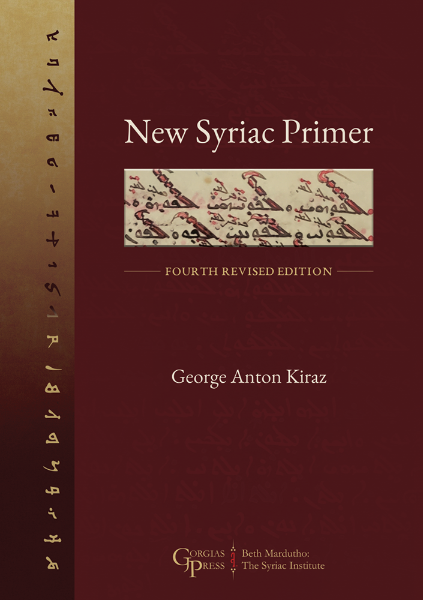 | New Syriac Primer (4th ed.), by George Kiraz Formats: Paperback and eBook editions | Fun, intuitive, and highly practical, this primer is an excellent introduction to those who have never studied Syriac before. The book includes free audio downloads so that you can hear Syriac being spoken. |
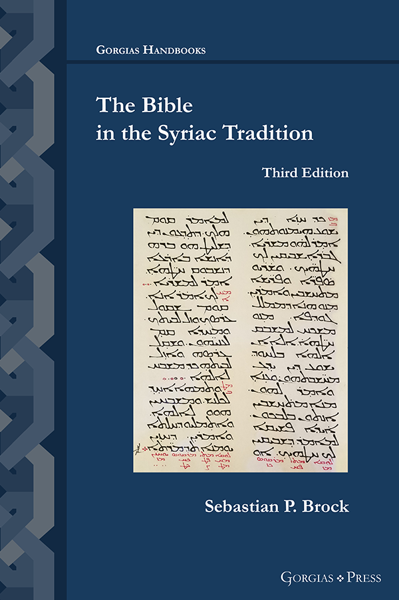 | The Bible in the Syriac Tradition (third edition), by Sebastian Brock Formats: Paperback and eBook editions | This is a basic introduction to the various Syriac translations of the Bible and the ways in which they were used in the Syriac tradition. After an initial discussion of the general problems of biblical translation, the different surviving Syriac translations are outlined, as well as biblical manuscripts, lectionaries, printed editions, and translations. An appendix offers some comparative samples (in translation) to illustrate some of the differences between the different Syriac translations. |
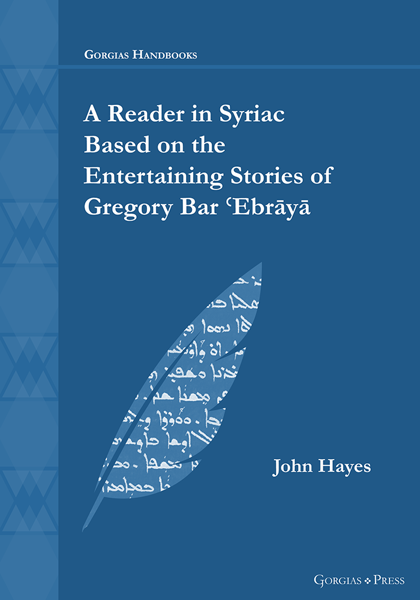 | Formats: Paperback only | The purpose of this modest volume is to aid beginning students of Syriac in acquiring facility in reading the language. It contains thirty stories taken from the Book of Entertaining Stories of Gregory Bar ʿEbrāyā (1226–1286 AD). Each story includes an analysis of its grammar and vocabulary. There is also a discussion of cognates to the Syriac vocabulary in Arabic and Hebrew. |
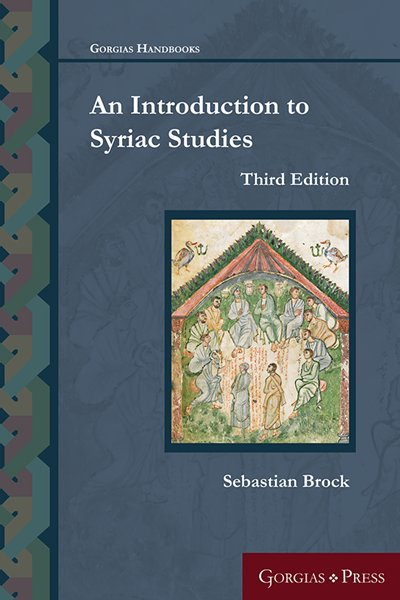 | An Introduction to Syriac Studies (Third Edition), by Sebastian P. Brock Formats: Paperback and eBook editions | This Introduction aims to provide basic guidance to important areas of Syriac studies. The relevance of Syriac studies to a variety of other fields is explored. A brief orientation to the history of Syriac literature is offered, and Syriac is set within the context of the other Aramaic dialects. A thorough discussion on important tools (Instrumenta Studiorum) is presented; topics include grammars, dictionaries, the Bible in Syriac, histories of Syriac literature, bibliographical aids and relevant series, periodicals, and encyclopedias. This Introduction should prove useful both for the student beginning Syriac studies and for scholars working in adjacent fields. |
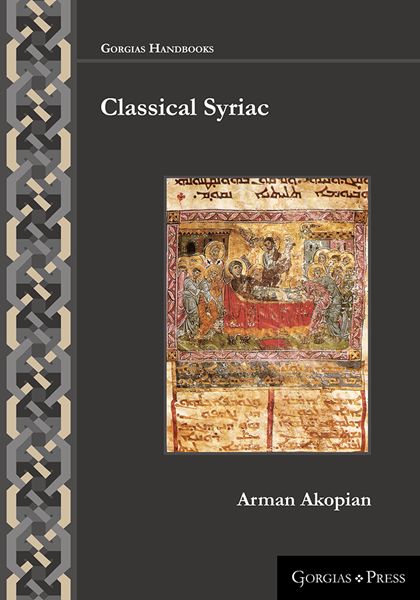 | Classical Syriac, by Arman Akopian Formats: Paperback and eBook editions | A grammar of Classical Syriac. An introductory course of eight lessons presents the Syriac phonology and script, followed by the basic course of 40 lessons. The book is designed to cover one academic year. |
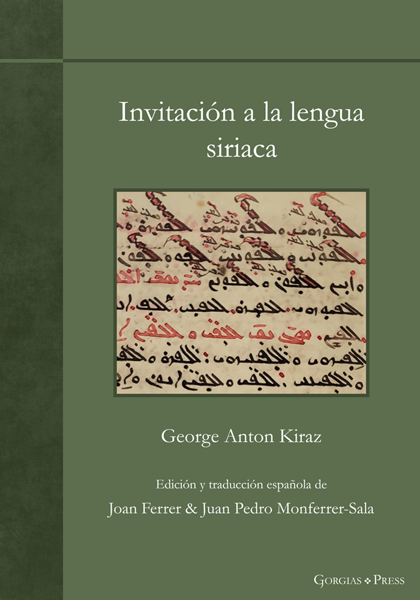 | For Spanish speakers: Invitación a la lengua siriaca, by George Anton Kiraz; Edición y traducción española de Joan Ferrer & Juan Pedro Monferrer-Sala Formats: Paperback and eBook editions | A Spanish translation of George Kiraz's popular New Syriac Primer. This fruitful integration of scholarly introduction and practical application provides a primer that is more than a simple grammar or syntactic introduction to the language. Written in a style designed for beginners, Kiraz avoids technical language and strives for a reader-friendly inductive approach. |
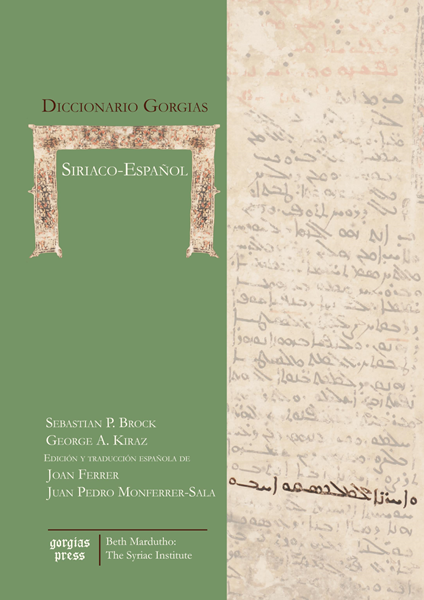 | For Spanish speakers: Diccionario Gorgias Siriaco-Español, by Sebastian P. Brock & George Anton Kiraz; Edición y traducción española de Joan Ferrer & Juan Pedro Monferrer-Sala Formats: Paperback and eBook editions | El Diccionario Gorgias Siriaco-Español, basado en el Gorgias Concise Syriac-English, English-Syriac Dictionary de Brock y Kiraz, ha sido concebido como un recurso académico, concebido tanto para el siriaco clásico como para el siriaco literario moderno. A Concise Syriac-Spanish Dictionary. Based on Brock and Kiraz's 2015 Gorgias Concise Syriac-English, English-Syriac Dictionary, it is designed to be a convenient academic resource for Classical Syriac. |
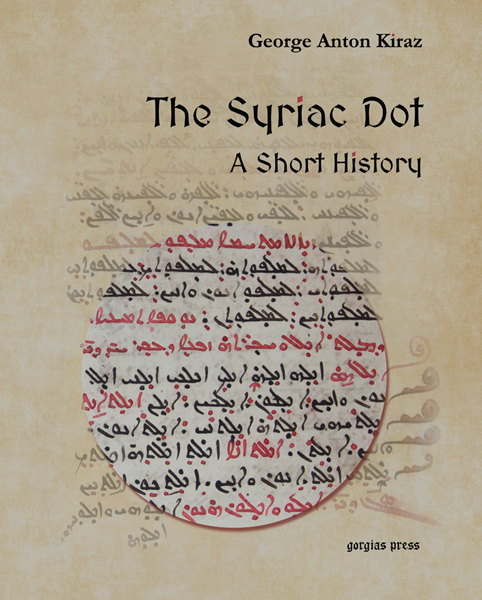 | The Syriac Dot (English), by George Kiraz The Syriac Dot (Arabic), by George Kiraz; Translated by Hilal Mohammad Al-Jihad Formats: Paperback and eBook editions | Dots are used in Syriac for everything from gender and tense to vowels and punctuation. In this short book, Dr. Kiraz peels back the story of the dot layer by layer to discover its origins and demystify each of its uses. |
 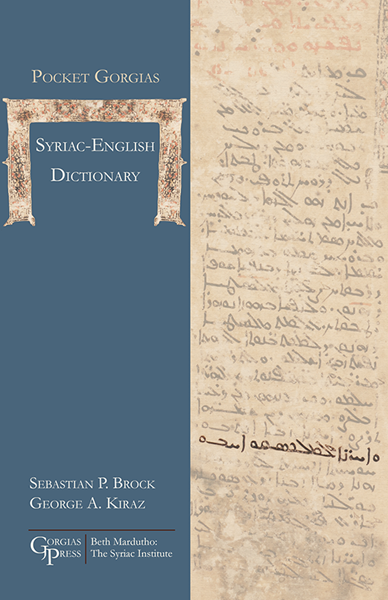 | Pocket Gorgias Syriac-English Dictionary, by Sebastian Brock and George Kiraz Formats: Paperback and eBook editions | The Pocket Dictionary is both a convenient academic resource and a door into the world of Modern Literary Syriac. With 13,000 entries drawn from the major existing works, it is a practical tool for all but the most specialized Classical Syriac texts. |
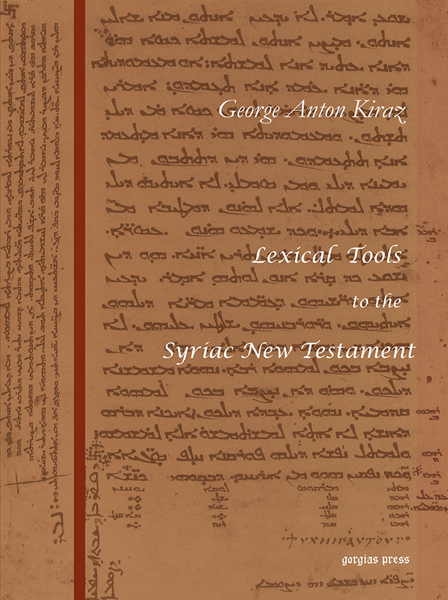 | Lexical Tools to the Syriac New Testament, by George Kiraz Formats: Paperback only | This is a Syriac-English dictionary based on word frequencies, tables of conjugations, a list of homographs, a list of Greek words, a skeleton grammar, and more. It is a necessary tool for any student of NT Syriac. "Syriac students who digest the material in this volume will be able to read the Syriac New Testament with ease and pleasure." -C. Morrison, Orientalia Christiana Periodica |
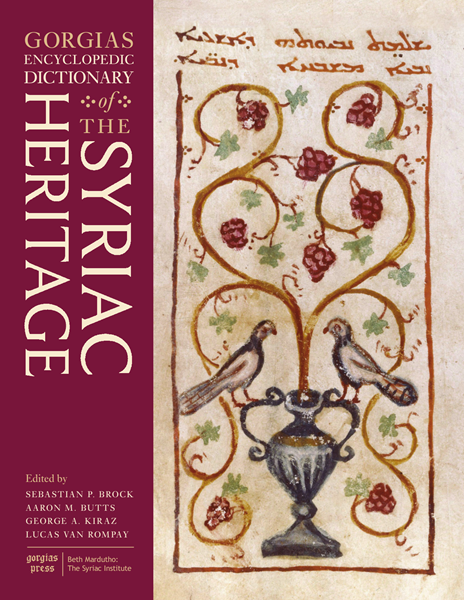 | The Gorgias Encyclopedic Dictionary of the Syriac Heritage, edited by Sebastian Brock, Aaron Butts, George Kiraz, and Lucas Van Rompay Formats: Hardback and eBook | In more than 600 entries, this reference work covers the Syriac heritage from its beginnings in the first centuries of the Common Era up to the present day, with major entries devoted to Syriac Christianity’s contacts with Judaism and Islam, and with Armenian, Coptic, Ethiopian, and Georgian Christianities. The entries are accompanied by 131 illustrations and maps, twenty of which are in color. |
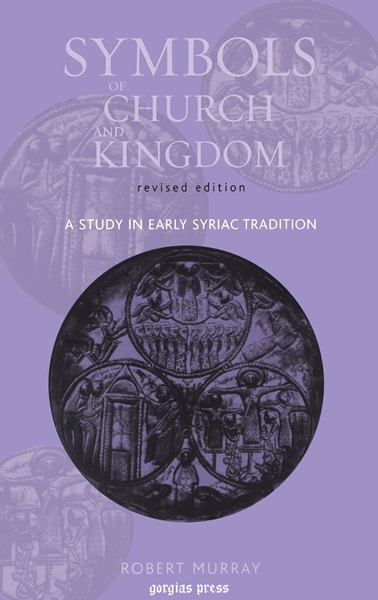 | Symbols of Church and Kingdom, by Robert Murray Formats: Paperback only | In this revised and updated edition of his classic work, Robert Murray offers the fullest and most vivid picture yet available of the development and character of the Syriac culture, illustrating both its original close relationship to Judaism and its earlier origins in Mesopotamian civilization. |
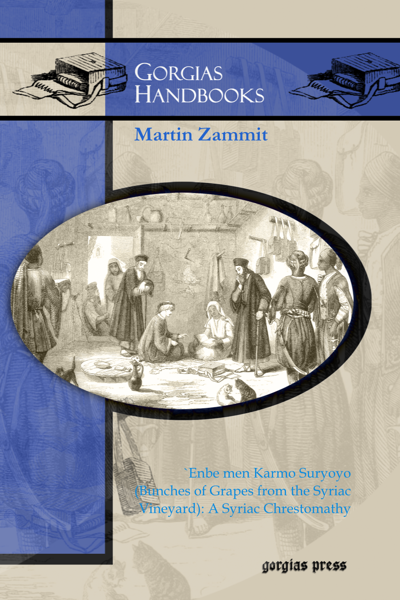 | `Enbe men Karmo Suryoyo (Bunches of Grapes from the Syriac Vineyard) A Syriac Chrestomathy by Martin Zammit Formats: Paperback and eBook |
`Enbe men Karmo Suryoyo is a chrestomathy intended primarily for students who have covered the essentials of Syriac morphology and syntax, but it should also interest anyone who enjoys Syriac literature in general. The twenty-six selections consist of examples of Syriac prose and poetry from the second until the thirteenth centuries AD. The readings reflect a wide and varied range of subject matter. Inevitably, selections of a religious nature predominate, but historical, ethnographic, chemical, astronomical, and linguistic excerpts produced by famous Syriac authors, as well as less familiar ones, have been included. A Syriac-English glossary and an index of grammatical points are included. |
